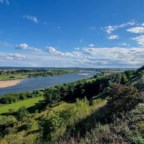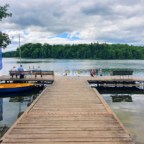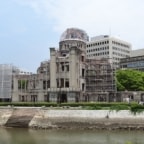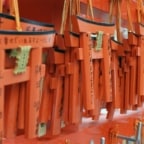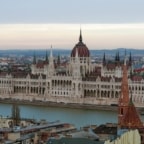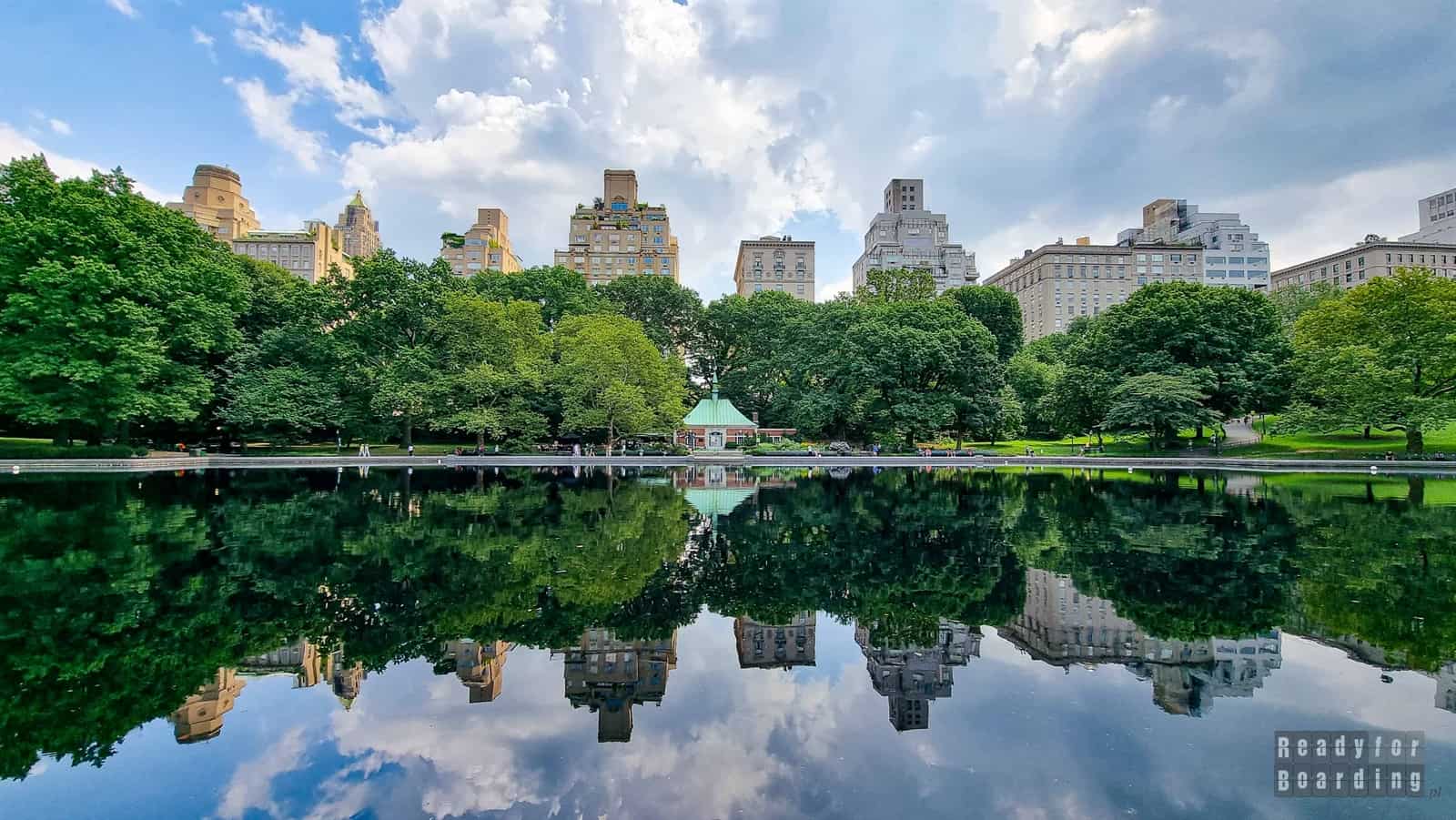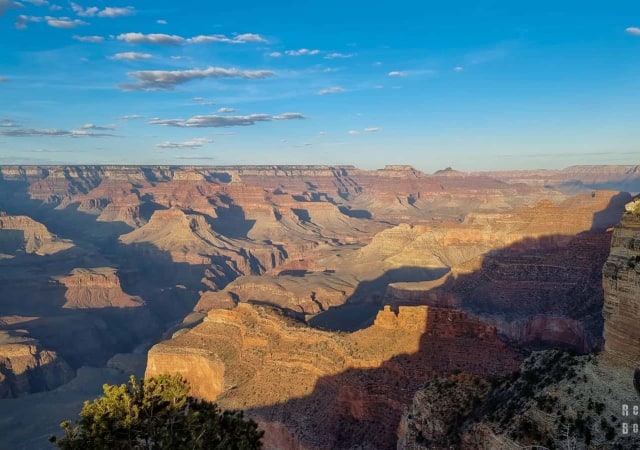Tokyo – a huge metropolis, crowded and busiest streets and stations, and on top of that a complicated schedule of subway lines…. how to find your way around here!
It can be done! It turns out to be a very tourist-friendly city, everything is painfully orderly and the people of Tokyo go with the flow, so sometimes you can just get swept along by the current. No one leans in, no one rebels, and the only way to stand out from the crowd is with flashy clothes, makeup and ever more fancy phone accessories.
After briefly observing Tokyoites, you can immediately figure out how to stand in line for the subway, how to maneuver between cyclists on the sidewalk or among the crowds at the most crowded intersection. It may take some time to get used to, but it’s worth taking a moment to orient yourself, and getting around will be much easier and more enjoyable.
We, at first, couldn’t help but marvel and stare. We happened to stare at people, which could be perceived as very inappropriate behavior, but it was our first day in such an exotic country. Besides, there is no denying that we stood out from the crowd. Nonetheless, we had little trouble getting around Tokyo by subway smoothly and seamlessly. Anyway, you can read more about subway travel itself here.
Today we will describe to you our first day in Japan, in Tokyo
Table of contents
Morning, or the largest Fish Market – Tsukiji
After a hearty continental-Japanese (neither continental nor Japanese) breakfast, we set out to conquer Tokyo. Our first destination was the largest fish market in the world, Tsukiji (Japanese: Tsukiji-shijō). We went there on foot, and along the way we passed plenty of street bars where Japanese people going to work were quietly sitting or standing at small, high tables. No one here was in a hurry. People sat and quietly leaned over a bowl of soup or some food unfamiliar to us at the time.
Standing in pots, leaning over a bowl of soup and slurping – this is a typical street view that will often accompany us as we traverse Tokyo.
After about half an hour of walking, we arrived at the market. A huge hall, lots of moving carts, noise, the smell of fish and everything that can be caught from the water made the atmosphere unique, and the place can be seen (and felt) from afar. This largest fish market has been in operation since 1923, and doesn’t seem to have undergone any major renovations since then.
As a tourist attraction, Tsukiji is especially recommended for those who suffer from “jet lag,” as you can attend the famous tuna auctions (famous because some specimens reach 300 kg!) as early as 6 am. However, getting into the auctions is not that easy and not everyone can get in. To get inside you need a special ticket, the number of which is limited to 120. To get one you have to hunt for it as early as 3:00-3:30! If by some miracle you manage to break that early and get inside, in addition to the auction, a tour of the local estate awaits you.
However, if someone can’t manage to pick up at 3:00 am then one can come to the market after 9:00 am – only then are tourists allowed in. If someone starts hanging around earlier, he is immediately asked to leave the hall.
Unfortunately, however, after 9 o’clock it is almost swept away (literally!). Of course, there are quite a few stands still stacked with fish, but many are already cleaned up or with just leftovers. However, this did not prevent us from walking between the stands and soaking up the smell of fish ;) Even at this “late” hour you can see the enormity and scale of the sales going on here. The amount and variety of fish, seafood can overwhelm, below are a few photos (unfortunately, we still can’t stand in front and brazenly titillate the unknown number of shots ;-)):
Outside the hall, there are quite a few bars where you can eat dishes of fresh fish, straight from the market. Fresh is probably no longer possible! Of course, sushi bars reign supreme, looking rather inconspicuous from the outside: just such unassuming bars lined up in a row. No exclusive there. Surprisingly, this is where you can eat the best sushi in town (at least that’s what our Lonely Planet guide claimed).
By what do you know the best ones? After the queues outside ;) To get to some you have to wait more than an hour!
Sightseeing in Tokyo…
Our next point on the map was the Government Building(Tokyo Metropolitan Government Building, Japanese. Tōkyō-to Chōsha) in Shinjuku County. It is a tall building with two towers, on top of which there are free viewpoints on the 45th floor (about 202 meters high). Before you arrive, you can check the website to see which tower is open on which days of the week (for visitors, only one of the towers is open on a given day). It is said that from the top you can even see Mount Fuji in good weather, but we did not manage to do so. Nevertheless, the views were still interesting, typically urban: you can see both tall office buildings and lower, residential blocks.
On the first floor there is a cafe and a gift store.
While already in Shinjuku, it’s worth checking out Shinjuku Golden Gai, which is about a 20-minute walk from the government building. The place is famous for its small, narrow streets with typical, even smaller Japanese bars: one, two stools and a bar. It is surprising how popular this place is, because if it wasn’t for the note in the guidebook we would probably never have looked here. The buildings appear dilapidated, the awnings worn, the inscriptions faded, which only adds to the impression that this place is taken out of another era. Surrounded by a neighborhood of modern office buildings, high-speed, wide roads, tall buildings. And maybe that’s why it’s such a surprising place – completely unexpected, so different, and in a way traditional.
It is said that Shinjuku Golden Gai looks best in the evening, when the bars fill up with people. We were there in the daytime and do not know how more people could move there, it is terribly …. cramped ;)
Senso-ji Temple, Asakusa
Then we went to the most popular temple in Tokyo – Senso-ji in the Asakusa district. Already here we could see how helpful and courteous Tokyoites are. They are able to approach, to chat, to ask if we need help – completely selflessly. Fact, we stood out from the crowd, because white people could be counted on the fingers of one hand. Or did we just look completely confused? :)
Not surprisingly, temples in Japan were a complete novelty for us. What we didn’t expect was that after passing through the niōmon (not tori!) gate , we ended up on an old, typical street with stalls leading to the temple itself (Nakamise-dōri). Here you can buy almost anything, food, souvenirs, clothes, etc.
Our attention was drawn to ice cream in interesting flavors:
Interestingly, you can’t eat on the street, so after buying, you have to stand, hide inside a bit and eat quietly :) Fortunately, the vendors immediately inform you about this strange custom. This, of course, applies to all of Japan. It’s just that street food is not welcome there, which also hindered our non-stop excursions ;)
However, let’s focus on the temple itself, because there is much to focus on. The gate itself is impressive. It is called the Gate of Thunder (Kaminari-mon), and in addition to the giant 4-meter lantern located here, you can see two statues of the gods (storm and wind) on the sides. Unfortunately, they are obscured by nets and are hard to see, much less capture in a photo. These deities (or guardians) distinguish a niōmon gate from a tori (that is, a Buddhist temple from a Shinto chram – we could write a lot about the differences, but about that another time).
The temple is very popular with tourists, one could even venture to say that it is the most visited temple in Japan. Crowds are swarming at the gate, and behind it, on Nakamise-dōri, it is not at all looser. At times it is difficult to walk to the temple itself.
Senso-ji Temple is the oldest temple in Japan, which may come as a surprise, as there are no signs of deterioration anywhere, the intense, bright red color beating the eyes everywhere. As befits a temple, smoke from incense sticks placed in a special hearth spreads around. As custom dictates, this smoke should be waved in one’s direction and then washed one’s hands in a dragon-shaped fountain.
Next to the main building, there is a tall, 5-level pagoda.
A real sushi bar
After this experience combining tradition and plastic kitsch, we decided to look for something to eat in the area. We headed toward one of the pubs recommended by the Lonely Planet guidebook. The queue was too long (again!) so we decided to look for something on our own. We ended up at a typical sushi bar where Tokyoites eat.
At first we were completely lost as to how to find our way around the cramped room, where we could barely find free chairs. Fortunately, an elderly lady who worked here took pity on us and showed us in a snapshot, a little in pictures, what it was all about.
The principle is simple: colored plates go on the belt, and each color corresponds to a different price. On the buffet there was a breakdown of exactly how much each color costs. At the end we are summed up for the number of plates in each color. Of course, as a rule, we didn’t know what was on the plates except for the rice, well, but once you live and you have to try. Prices? About. PLN 5-6 for two pieces. In total, for £30, we were both full. Plus, water and green tea were free.
Since we had strayed a bit from the temple in our search for a pub, we decided to continue on that trail and ended up in the city park. If you think there are no homeless people in Tokyo I recommend going to Ueno Park. Images native to Poland ;) The park itself is very nice, but it certainly looks better when the cherry blossoms are in bloom, which is around April.
Akihabara
Nearby is a street in the Akihabara district, For typical geeks. The district is full of computer stores, games, slot machines, etc. Some stores are several stories high and bloated with electronics. It’s hard to tell if some are just for guys, because right from the entrance you’re greeted by manga-like posters with naked girls.
It is noisy, crowded, colorful here. Music and all sorts of sounds are howling from stores and vending machines, and it’s hard to hear your own thoughts in all this cacophony. We went into several stores, simply out of curiosity, and fortunately, we quickly left empty-handed.
Imperial Palace
One of the last highlights of the day was the Imperial Palace in Tokyo. This huge complex is the lungs of Tokyo, the largest green area in the center of the capital (the area is 341 hectares). Unfortunately, the entrances were closed, and you can’t see much through the walls. We don’t know if it was a matter of the hour or if that’s how we ended up, because generally the gardens can be entered and we know from other reports that it’s worth it (only the inner gardens are only open two days a year). Maybe we also approached from the wrong side, but we didn’t have the strength to look any further.
The palace is located right next to Tokyo’s main train station. From the square in front of the palace you can admire the buildings of the business district.
After resting for a while, we headed to the Ginzo district, a neighborhood with luxury and most expensive stores. We were just taking a look at it from the outside ;)
At the end of Shibuya…
For the evening itself, we went to the famous intersection in the Shibuya district after dark. It is the most congested intersection in the world. The number of Japanese people and tourists crossing at the bias at each light change is impressive (it is said to be as many as several thousand people during rush hour)! The best way to admire it all is from the floor of a nearby Starbucks or the shopping mall on the opposite side. You can almost feel like you’re in the scene from Tokyo Drift :)
With the remnants of our strength, we walked a few blocks around this bustling neighborhood. Intense neon lights, deafening music, hustle and bustle only made us dream of getting away from this place as soon as possible after such an intense day. We decided to return here another day.
Summary
It was a very long day! It was a great day! At the end of the day we fell like flies…. but only to quickly gain energy and set off the next day for more conquests….





























